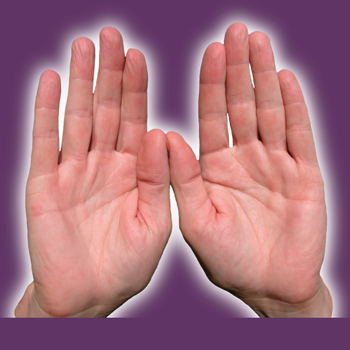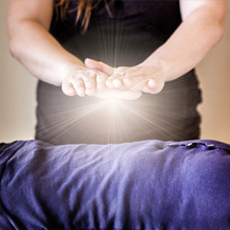by William Lee Rand
This is an excerpt from the introduction of the new Reiki Master Manual.
Shinpiden
The Japanese name for the Reiki Master level is Shinpiden which means mystery teaching. The mystery that is referred to is the mystery of our own existence, including the mystery of life and consciousness. These qualities are boundless. No matter how much we experience them we will always find there is more, a next step, another doorway, a deeper level. And so the mystery is never completely solved, but continues to become more fascinating and inviting as we heal more deeply and our awareness expands. Learning the Master symbols and experiencing the attunements that go with them along with the other meditations and exercises in class will further open you to this potential. The nature of this type of study, the development of your connection to Reiki, involves continually healing on deeper levels and the development of your ability to channel ever more refined and compassionate levels of Reiki healing energy. This is a joyous path that can continue on and on as long as you choose to remain a seeker.
Western Reiki
Reiki was introduced to the West by Mrs. Takata when she returned from her visit to Japan in 1938 and became a Shinpiden. Her teacher, Chujiro Hayashi Sensei was the last Shinpiden student certified by Usui Sensei. Hayashi was also a medical doctor and had also been an officer in the Navy. Usui Sensei gave Hayashi the assignment of further developing the Usui system from the view point of a medical doctor. Hayashi remained a member of the Gakkai(1) at this time, but opened a Reiki clinic and school called Hayashi Reiki Kenkyu Kai which was separate from the Gakkai. In his clinic he carried out the assignment given to him by Usui Sensei and this resulted in the development of a new style of Reiki Ryoho. The new style contained the same energy lineage going back to Usui Sensei and many of the same techniques, but also contained new methods developed by Hayashi. These included a new system of attunements, a standard method of hand placements along with specific hand placements for various illnesses and conditions and the development of a Reiki handbook. Also, in the original Usui method, the client would sit in a chair to receive a treatment from one practitioner, but Hayashi changed that to giving treatments by several practitioners while the client is laying on a treatment table. After Usui Sensei’s transition, Dr. Hayashi left the Gakkai and became independent.(2) So, from this we can see that the origin of the Western style of Reiki came from the style of Reiki Ryoho developed by Dr. Hayashi.
Usui/Tibetan Reiki
Iris Ishikuro was one of Mrs. Takata’s students and was also her cousin. She received the Usui Master training from her. Iris also had other training. She was involved with the Johrei Fellowship, a religion that includes healing with energy projected from the hands. She had also learned another kind of Reiki from her sister who worked in a Tibetan temple in Hawaii. This other kind of Reiki came to be called Raku Kei.(3)
Mrs. Takata required all the Masters she trained to charge a fee of $10,000.00 for the Master level. She taught that this was a required fee and if you did not charge this fee, then you would not be teaching Usui Reiki. This high fee along with the tendency of her Masters to not teach many other Masters was causing Reiki to spread very slowly.
After Mrs. Takata died in 1980, Iris decided that she would follow her own inner guidance and teach for a more reasonable fee. As far as I know, she was the only one who did this. All the other Masters Mrs. Takata trained continued to charge the high fee for Mastership.
Iris trained only two Masters. One was Arthur Robertson and the other was her daughter, Ruby. She asked them to always charge a reasonable fee. Ruby decided not teach Reiki. However, Arthur Robertson did begin teaching and he had learned both the Usui system and the Raku Kei system from Iris. He began teaching in the mid-80’s. The reasonable fee allowed many more students to become Reiki Masters. He began giving Master trainings with 10-30 students in each class. Those that Robertson taught trained others and the number of teaching Reiki masters began to quickly increase.
Because Iris Ishikuro broke the restriction that Takata had placed on Reiki, she became the pathway through which Reiki would spread more quickly and eventually be passed on to people all over the world. Because of this, it is likely that the majority of Reiki people in the world have their lineage going back through Iris Ishikuro.
My first teacher, Diane McCumber learned Reiki from Arthur Robertson and was taught both the Usui system (Takata style) and the Raku Kei system. While I learned both from her in March of 1989, she mainly taught the Raku Kei system. Later the same year, I was also taught the Usui system from Marlene Schilke who also learned from Arthur Robertson. This gave me a solid understanding of both systems which I began teaching separately.
However, many of my students wanted to learn both systems but didn’t want to take both classes and asked me if I could combine them. After meditating on this I realized that this was possible. I experimented and eventually developed the system I began calling the Usui/Tibetan system of Reiki. It simplified the process of attunements for Reiki I by using the one attunement system from Raku Kei. When I combined the two attunement systems, I included all the steps and symbols used in the four attunement system of Usui Reiki I. This made it a powerful, yet simple system that was easy to learn. However, the original Usui system of attunements as taught by Mrs. Takata is also included in this manual so anyone taking the master training can choose to use either the Usui (Takata) system of attunements (that includes the 4 attunement method for Reiki I) or the Usui/Tibetan method of attunements.
Teaching Reiki I&II Together
Some students are also curious about why I teach Reiki I&II together when some teachers insist they must be taught separately with a certain period of time between them. There are many benefits in teaching them together including the fact that the students leave class with greater healing skill and ability.
Actually, teaching Reiki I&II together is more traditional then what many have been told. I learned Reiki I in 1981 and since that time have spoken with many people who took classes from Mrs. Takata and some that sponsored her classes. From this information it is clear that Mrs. Takata sometimes taught Reiki I&II back to back or as part of the same class or taught them with just a few days in between.
Also, in 2001, I attended a Reiki I&II class in Japan taught by Mrs. Yamaguchi. She was in her 80’s at the time and had received her Reiki training from Dr. Hayashi including her Shinpiden or master level from him. She taught in the same style that she was taught by Dr. Hayashi – and she teaches Reiki I&II together in one five day class with about 2-3 hours of class time per day. So, from this information, we can see that the traditional way as taught by Dr. Hayashi is to teach Reiki I&II together.
However, for beginning teachers and those who feel guided to do so, it is also possible to teach them separately. Either way is fine.
After becoming a Reiki master in March, 1989, I wanted to learn as much as possible about Reiki and decide I would take the master training from a number of Reiki masters. This broadened my understanding of Reiki and helped me in many ways. I learned the Usui/Takata style, the Raku Kei style, and several of the Japanese styles. I also sponsored Arjava Petter to teach his classes in 1999 in the US and so had the great opportunity of thoroughly learning the Japanese Reiki Techniques. The JRT training video was also created at this time. In addition, I have studied the JRTs from Mrs. Yamaguchi, Mr. Doi and Mr. Inamoto. Download my lineage chart.
1 Usui Reiki Ryoho Gakkai. This is the main organization started by Dr. Usui to promote Reiki and is still in existence in Japan.
2 Interview with Hiroshi Doi, Fall 2003 issue of Reiki News Magazine.
3 According to Arthur Robertson interviewed summer 1989 at the Spiritual Frontiers Fellowship.







